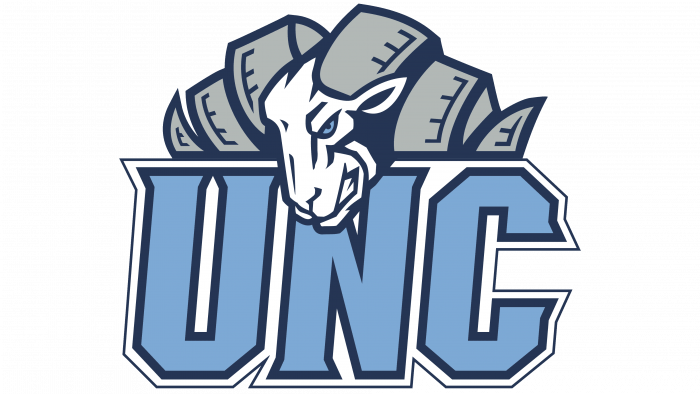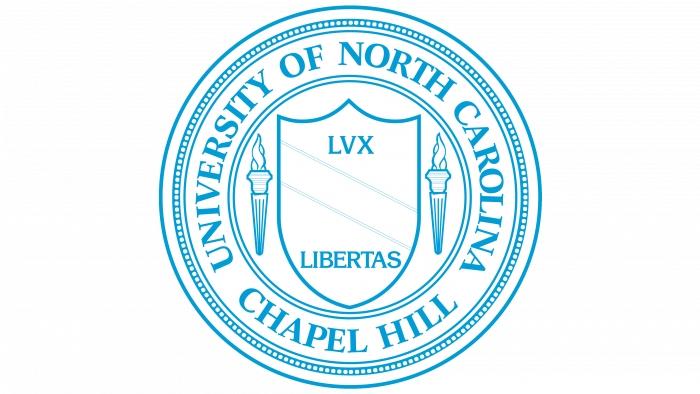The university’s visual sign encodes its rich historical past. The UNC logo reflects the ease and accessibility of learning at the institution. The main features of symbols are clarity and consistency.
UNC: Brand overview
| Founded: | December 11, 1789 |
| Founder: | William Richardson Davie |
| Headquarters: | Chapel Hill, North Carolina, United States |
| Website: | unc.edu |
UNC is the abbreviation for the full name of the University of North Carolina at Chapel Hill. It is also called Chapel Hill, North Carolina, UNC-Chapel Hill, or simply Carolina. The higher education institution appeared in 1789 and was founded by William Richardson Davie. It is now part of the UNC System structure and the flagship institution. He was awarded the R1 level – a doctoral university with active research work. Its location is in Chapel Hill, North Carolina. It has a very extensive system:
- One elementary unit
- 13 vocational schools
- A college of arts and sciences
- 70 educational courses
- A sports club
Meaning and History
The decision to open the school was made at the North Carolina General Assembly in 1789, and the foundation stone was laid in 1793. In any case, now it is among the top 3 oldest universities in the United States. During the Civil War, the university continued to operate, although, during that period, the area lost a large population. As a result, due to the lack of students, the educational institution developed slowly. In December 1870, it was closed for renovation. Its relaunch took place in 1875.
1931, UNC merged with the Woman’s College of the University of North Carolina and the State College of Agriculture and Engineering. The result was the Consolidated University of North Carolina. However, the full transition to coeducation took place only in 1963. It has a very large educational structure in the region and throughout the country. It has more than 550 student organizations in various fields and is the cradle of many outstanding personalities. The university also became one of the founders of the Atlantic Coast Conference, which appeared in 1953.
The most legendary symbol of the University of North Carolina is Old Well. This small dome, built in a neoclassical style, is used as an emblem of the educational institution and as a tribute to the well from which water is used to feed the entire school. It is now (after the campus sprawl) located at the southern end of the northern block of McCorkle Place and rises between Old West and Old East, the oldest buildings.
The university seal has a classic look: a rondel with a central part surrounded by several rings. The shield has a wide diagonal stripe in the middle, separating the Roman numeral “LVX” and the word “Libertas” in capital letters. They are located at the top and bottom. On the sides of the shield are two burning torches in the ancient Greek style.
A round frame with double edging follows this. It separates a broad line with the full name of the university (“University of North Carolina”) and with an indication of its location (“Chapel Hill”). The inscription is made in printed type in the upper case. All signs are supplemented with serifs. Several stripes of different sizes run along the outer edge of the print. One is decorated with a pattern of a chain of white dots on a blue background. The frame is also blue.
The emblem is a combination of text and graphics. To this end, the institution of higher education uses its full name and one of the key mascots – the Old Well dome, which is installed above the well. The architectural structure is fully shown – with steps, a dome, and four columns. Moreover, her image seems to emerge from the negative space because no other technique is used besides the play of blue and white. The white color emphasizes the monumentality of the structure and the sun’s location, as it looks like a glare from the illuminated side.
On the right is the name of the educational institution, ungrouped into three lines. At the top is the word “The University,” in the middle – “of North Carolina,” at the bottom – “at Chapel Hill.” The central row is the longest. The prepositions “of” and “at” are in handwritten italics; the rest of the words are in capital letters with serifs. A vertical bar is on the border between the text and the picture.
UNC: Interesting Facts
The University of North Carolina at Chapel Hill (UNC) is a top public research university in Chapel Hill, North Carolina. It is the main campus of the 17 campuses in the University of North Carolina system. Founded in 1789, UNC is one of the oldest public universities in the U.S. and is famous for its history, academic achievements, and positive impact on society.
- Historic Beginnings: UNC was the first public university in the U.S. to open its doors and the only one to give out degrees in the 18th century. This makes it a trailblazer in providing higher education to the public.
- Iconic Bell Tower: The Morehead-Patterson Bell Tower, a gift from John Motley Morehead III (class of 1891), is a key part of campus life. It chimes every quarter hour and plays songs during special occasions.
- The Old Well: A famous symbol of UNC, the Old Well used to be a functional water well but is now a beloved landmark. Students traditionally drink from it on the first day of classes for good luck.
- Notable Alumni: Among its many distinguished alumni is James K. Polk, the 11th President of the U.S. UNC, who has a history of producing influential figures in various fields.
- Educational Pioneer: UNC was the first public university in the U.S. to graduate students in 1798, highlighting its significant place in American education.
- Research Innovations: Known for groundbreaking research, especially in medicine, science, and public health, UNC has made important contributions, such as HIV/AIDS research and cancer treatment.
- Carolina Blue: The university’s official color, Carolina Blue, is famous nationwide. This shade of blue is a key part of UNC’s identity, from sports uniforms to academic robes.
- Dedication to Public Service: UNC is committed to public service, as shown by programs like the Carolina Covenant, which helps low-income students graduate without debt. This reflects UNC’s goal to make college education more accessible.
- Athletic Success: UNC is known for its excellent athletics, especially basketball. The North Carolina Tar Heels have won numerous national titles, and their rivalry with Duke University is incredibly well-known in college sports.
- Art Museum: The Ackland Art Museum on campus has a large collection of Asian, European, and contemporary art, showcasing UNC’s commitment to cultural education.
UNC-Chapel Hill combines historical importance, academic excellence, and a strong sense of service and innovation, making it a leading public university in the U.S. It continues to influence education, research, and community service globally.
Font and Colors
unc Chapel Hill logo
The university’s identity and sports club are different: their symbols do not have similar elements except the color scheme. If it is classic and strict at an educational institution, then it is innovative and playful at the sports department.
The university provides detailed recommendations for using typefaces on various media, such as the Internet, posters, advertisements, etc. So, he uses ITC Franklin Gothic LT Pro, Whitney, and Bembo Std. His signature palette comprises neutral white and Carolina Blue (Hex # 4B9CD3).







